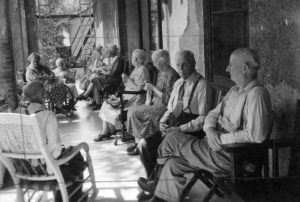 If your elderly loved one resides in a San Diego nursing home and requires antibiotics for a bacterial infection, can you trust that your loved one is receiving the proper medication? According to a report from Kaiser Health News, “antibiotics are prescribed incorrectly to ailing nursing home residents up to 75 percent of the time,” based on data gathered by the U.S. Centers for Disease Control and Prevention (CDC). When seniors are not provided with the right antibiotics, the antibiotics can lose their effectiveness, leading those same seniors to develop serious and life-threatening conditions at a later date when those antibiotics no longer function as they should. Do these medication errors rise to the level of nursing home abuse or neglect? What can you do to help your elderly parent to avoid contracting a superbug at a nursing facility in Southern California?
If your elderly loved one resides in a San Diego nursing home and requires antibiotics for a bacterial infection, can you trust that your loved one is receiving the proper medication? According to a report from Kaiser Health News, “antibiotics are prescribed incorrectly to ailing nursing home residents up to 75 percent of the time,” based on data gathered by the U.S. Centers for Disease Control and Prevention (CDC). When seniors are not provided with the right antibiotics, the antibiotics can lose their effectiveness, leading those same seniors to develop serious and life-threatening conditions at a later date when those antibiotics no longer function as they should. Do these medication errors rise to the level of nursing home abuse or neglect? What can you do to help your elderly parent to avoid contracting a superbug at a nursing facility in Southern California?
Learning More About the Rise of Superbugs in Nursing Homes
As the article explains, just about one year ago, the CDC advised nursing homes across the country that they needed to take immediate action “to protect more than 4 million residents from hard-to-treat superbugs that are growing in number and resist antibiotics.” Elderly people in California nursing homes are particularly vulnerable to superbugs because their immune systems are not as strong as they once were. As the CDC has emphasized, “one way to keep older Americans safe from these superbugs is to make sure antibiotics are used appropriately all the time and everywhere, particularly in nursing homes.”
 Southern California Nursing Home Abuse Lawyer Blog
Southern California Nursing Home Abuse Lawyer Blog
















